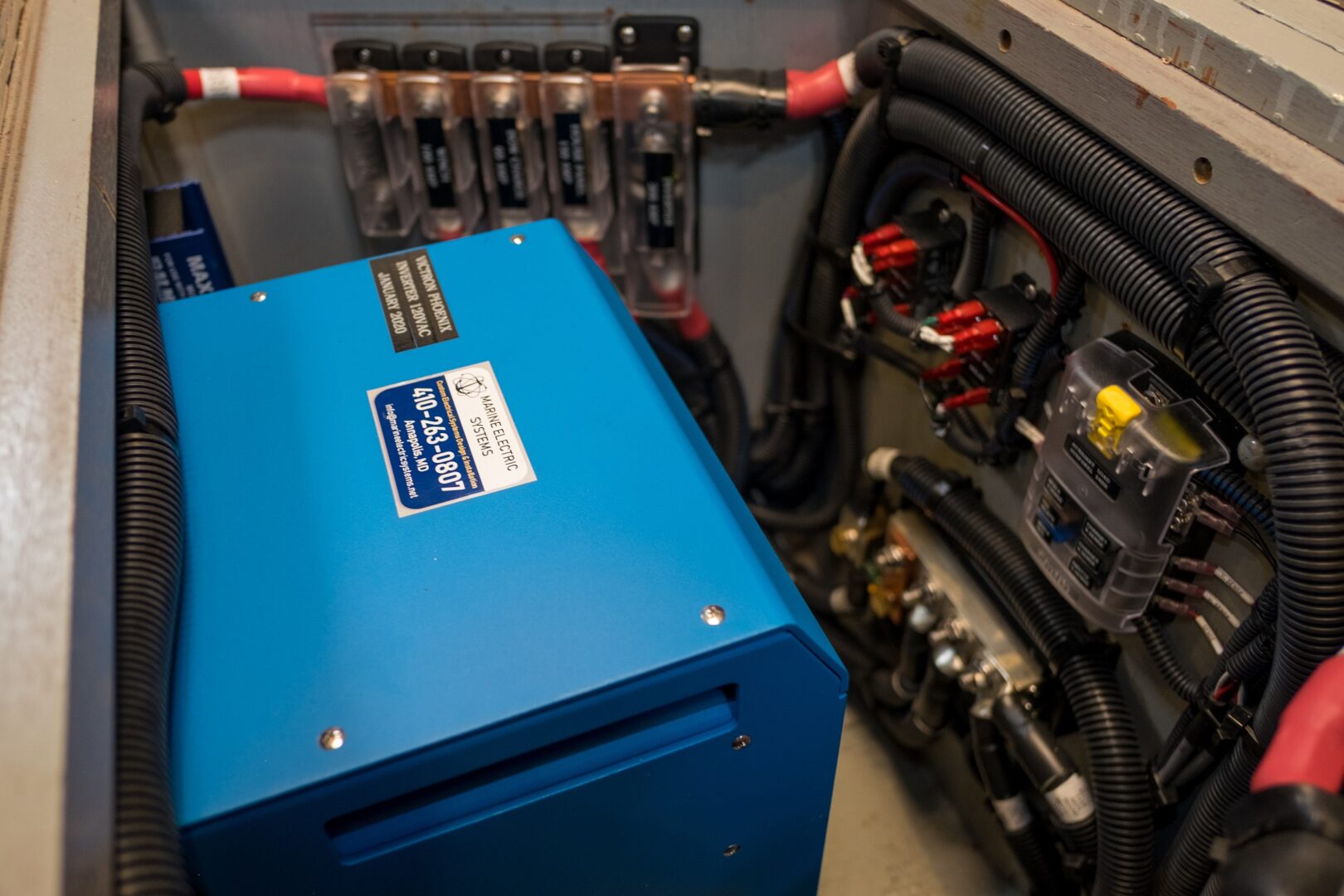
Following installation methods and best practices is important to protect your boat from catastrophic failures.
Running any electronic device on a boat or ship used to require lead-acid batteries. Hauling these heavy batteries around was your only choice. With battery and solar options evolving daily, however, you have more choices now regarding power resources. Lithium batteries for marine use are the latest trend. It’s gaining momentum for a good reason. Lithium-ion batteries are flexible and hassle-free, encouraging a seamless transition for your new system. Following installation methods and best practices is important to protect your boat from catastrophic failures. Keep reading to learn more about the installation process for lithium batteries.
Why Choose Lithium Batteries?
Before you install lithium batteries, understanding their benefits is a must. Lithium technology doesn’t produce fumes like lead-acid batteries, which can be hazardous for long periods of exposure. Lithium-ion batteries also have a very rapid, high-current recharge. They can be discharged to almost empty without the need to be regularly recharged to 100% as you have to with lead-acid batteries. LFP batteries also provide a greater number of charge cycles than the equivalent capacity lead-acid battery. They are also considerably lighter than any type of lead-acid battery, which can significantly affect your vessel’s balance and performance.
The Installation Process
Marine Electric Systems follows strict installation methods and best practices to protect your boat from catastrophic failures. First, we determine the best location for your new lithium batteries. Several important factors include distance to chargers and loads, temperature, and usable space. Then we choose the best battery size and layout. Lithium-ion batteries can be installed in series, parallel, or series-parallel. Finally, we determine the cable size and install the required circuit protection for your system.
Prioritizing the Battery Management System
As you add batteries onto your vessel, you must incorporate a protection system into the design. A battery management system monitors and protects the battery from damage. A properly designed BMS will provide battery voltage, charge and discharge rates, temperature, and an accurate State of Charge. Although a BMS is an additional installation step, it is considered a mandatory accessory. You’ll increase the life of the batteries, so you aren’t replacing the products shortly after their purchase.
If charging for many hours, check the lithium charger and its state and remove the battery when it reaches about 80 percent of its charge. If a lithium battery overcharges, it can create unstable and dangerous conditions that reduce its storage capability and lifespan.
Marine Electric Systems, LLC is a Leader In the Maritime Industry
We here at Marine Electric Systems have over 30 years of industry experience. You can trust our team for reliable service and expert craftsmanship in the Maryland, Baltimore, Annapolis, and Baltimore city areas! We’re highly certified and adhere to all ABYC and NMEA regulations. We specialize in top-notch electrical solutions for recreational, commercial, and government boating clients. Anything from electrical refits, to navigation systems, or boating maintenance. To stay up to date on our services, follow us on Facebook, LinkedIn, Pinterest, Instagram, and YouTube. You can also contact us at 410-263-0807.
